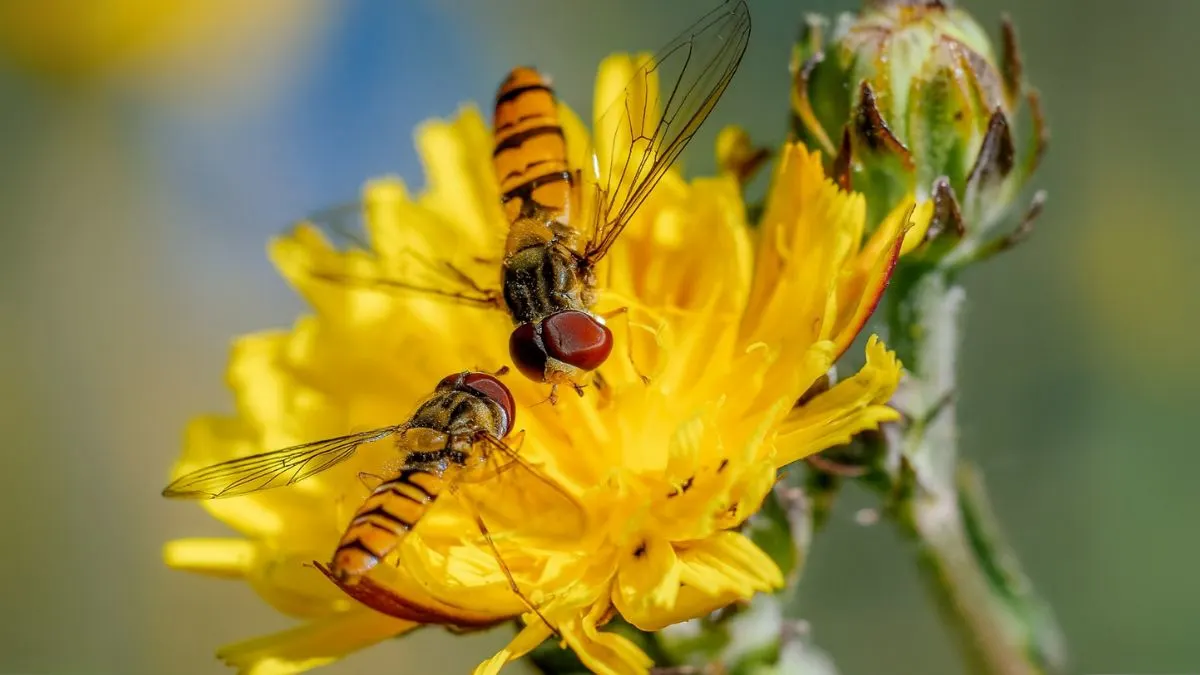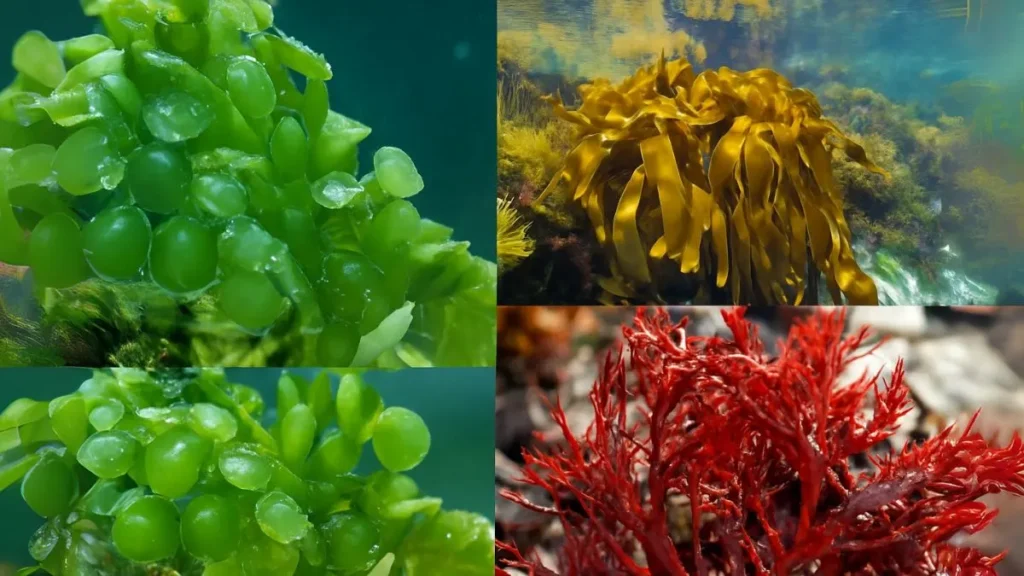Think of a whirring garden that does not rely on pesticides but on nature. That’s the power of hoverflies, among the unsung heroes of any garden. Occasionally mistaken for bees when they zip past you with their yellow-and-black bars, hoverflies (also known as flower flies or syrphid flies) are well-intentioned pollinators — and vibrant-winged allies in the war on aphids, thrips and whiteflies.
Their larvae are tiny but tenacious predators, munching on hundreds of aphids during their slender life spans. But if you want to do it effectively and naturally, without calling in pesticides that can be harmful (those relatively minuscule doses add up over a human life span of exposure), now would be the time to roll out the welcome mats for beneficial insects.
Why Hoverflies Are the Garden’s Unsung Heroes

Before we find out how to entice them to our gardens, let’s think about why you want hoverflies in your garden in Canada, the USA or anywhere else.
- Natural Pest Control: The hoverfly larvae are tremendous eaters. One larva will consume about 400 aphids before it becomes an adult. They are also predatory on small soft-bodied pests like scale and mealybugs.
- Excellent Pollinators: Nectar and pollen sources — Adult hoverflies feed on nectar and pollen, so they are important pollinators of a wide range of plants, including vegetables and flowers. They’re at their best in cooler weather and take up a slot when bees are less active.
- Chemical-Free Gardening: Ecosystem equilibrium — The love of the hoverflies. Hoverflies are small heroes in one of the most natural and delicate of ecosystems. If you stay away from chemicals or pesticides, you’re not only defending them but also drawing other good bugs like ladybugs and lacewings.
Step 1: Start by Growing Hoverfly-Loving Flowers
Hoverflies are attracted to flowers which have shallow, open petals allowing them access for nectar. The key is to provide food for both the adult and the larva.
Top Flowers to Plant:
- Queen Anne’s Lace (Daucus carota) – Those umbrella-shaped flowers are a favorite of hoverflies.
- Dill (Anethum graveolens) – Can be added in your recipes or lure pollinators.
- Fishpole cleome (Foeniculum vulgare) – This is a plant that forms clusters of tiny flowers that are attractive to hoverflies.
- Cilantro (Coriandrum sativum) – Attracts hoverflies and is good for nearby plants, as it gives a protective shield from pests.
- Cumin (Cuminum cyminum) – Provides variety and smell, not just nectar.
- Water Hemlock (Cicuta spp.) — Every time I spot this flower, my heart sings, because — according to the internet — in the wild this spindly plant can serve as a host for hoverflies (although probably better admired from afar: it’s poisonous to humans)!
Beyond the fact that this vegetation is some of your best plants for hoverflies, they also make your garden look better and provide a much-needed food source in early spring as well as during the summer and fall.
Also Read: Jatropha Plant: A Stunning Beauty with a Powerful Secret
Step 2: Utilize Companion Planting Practices
You can lure hoverflies to your plot with companion planting, while protecting your crops at the same time. The concept is simple: companion plant by intermingling deterrent plants with those that attract beneficial insects.
Companion Planting Tips:
- You can also grow dill or fennel close to aphid-magnet plants such as kale, roses and beans.
- Combine cilantro with tomatoes or peppers — the aphids that adore those plants will be taken care of by hoverflies.
- Plant Queen Anne’s Lace around the edges of your garden for both an eye and nose treat.
For an array of plants this wide, you can not only feed hoverflies but also keep your garden ecosystem in fine fettle — naturally.
Stage 3: Provide Them Homes & Laying Place
Safe places for hoverflies to sleep and breed. A tidy garden can be pretty, but a little wildness is good for biodiversity.
Habitat Tips:
- Leave brush (e.g. bundles of leaves and plant stems) and hollow-stemmed dead plant materials in place until fall/winter. These provide the wintering adults with a place to hide.
- Create small stacks of twigs, straw or leaves at the edges of your garden.
- Do not clear away everything organic — hoverflies like semi-wild areas.
That organic debris provides a snug refuge from predators and the cold — so that hoverflies return year after year.
Step 4: Stay Away from Chemicals/Pesticides
This cannot be emphasized too much: if you want to promote hoverflies, do not use chemicals or pesticides — even organic ones. Even though larvae are quite small, they can be killed or their reproductive cycle broken by relatively weak sprays.
Instead, consider organic pest control, such as:
- Introducing beneficial insects (ladybugs, lacewings).
- Spray with neem oil during the coolest part of the day and only as necessary, such as at dusk when you won’t be harming hoverflies.
- Maintain natural plant diversity that can regulate pest populations.
Also Read: Kunda Jasmine: The Fragrant White Flower That Attracts Positivity
Step 5: Get Year-Round Blooms
For hoverflies, nectar and pollen are critical during their active months. Plant your garden so there’s always something blooming, from early spring into deep fall.
Quick Seasonal Guide:
Season |
Recommended Plants |
Spring |
Queen Anne’s Lace, Dill, Cilantro |
Summer |
Fennel, Alyssum, Cosmos |
Fall |
Cumin, Marigold, Yarrow |
You could just let things bloom constantly, and there will be no reason for the adult hoverflies to leave — nor their larval bodyguards.
Step 6: Provide a Water Source
- Water will naturally provide the hoverflies with what they need within arm’s reach.
- Like anything living, hoverflies need water. Create a shallow pebble-and-water dish so they don’t drown. Install it beside your flowering areas so they can break for a quick drink and snooze nearby.
- Change the water every few days to keep mosquitoes from breeding.
Step 7: Observation & Appreciation
If you do this right, soon enough you will see little darting bugs flitting to and fro — that’s your sign of success! They eat aphids — fewer of the little suckers to bother the plants in your yard — and they are a sign that the garden is healthy, thriving, and balanced.
Take a little time to watch them at work — they are captivating, peaceful creatures that enliven your garden.
Also Read: Ranunculus Bulbs: The Secret to Blooming 100 Petals in One Flower
Personal Experience
The first hoverflies showed up in my own garden after I planted a clump of dill and fennel next to my tomatoes. Within a matter of weeks, I found fewer aphids on my plants — all thanks to companion planting and avoiding chemical sprays.
By the end of summer, their larvae had all but wiped out pests on my rose bushes — proof that nature’s balance does work when you create the right environment.
Bonus Tip: Attract Native Bees To Your Herb Garden With Hoverflies And Other Beneficial Bugs
And for more pest control, attract a menagerie of helpful insects:
- 🐞 Ladybugs – They eat aphids and whiteflies.
- 🕷 Spiders – Kill flying and crawling insects.
- 🐝 Bees – They make good companions with hoverflies for pollination.
Together, they are a self-sustaining natural defense system — no sprays, no poisons, just biodiversity doing what it’s meant to do.
Conclusion
They are nature’s unsung soldiers, beautiful and benevolent in pest control and pollination. Through planting hoverfly-friendly plants (and avoiding harmful sprays and pesticides), as well as employing some intelligent companion plantings, you can create a safe haven for these small insects to ensure your garden stays healthy and chemical-free.
So the next time you catch a brief glimpse of a small fly that flits gracefully above your garden beds, know this is not just some fleeting visitor — it’s your staunchest ally in the war against aphids.






